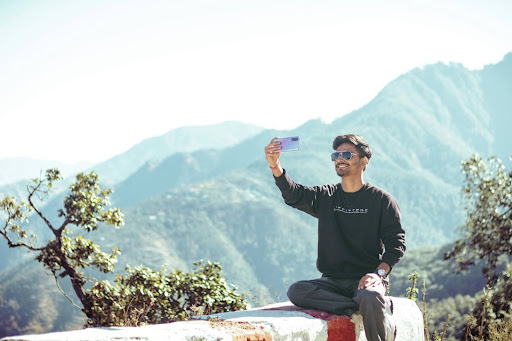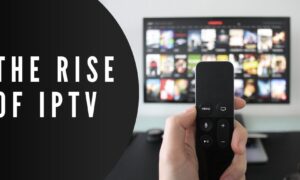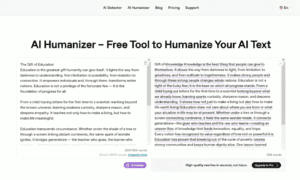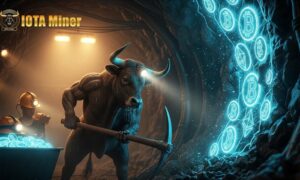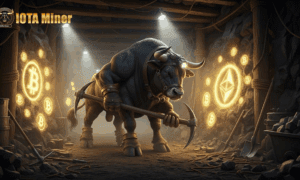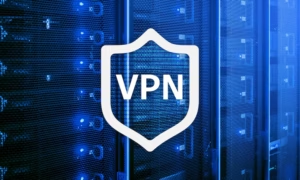The digital entertainment world has long been dominated by centralized platforms, where creators trade control for exposure. Despite attracting millions, many face shrinking earnings, shifting algorithms, and little say over their content. Now, new technology is breaking that mold—giving creators a chance to reclaim independence and set their own terms.
Empowering Creators with Smarter Systems
As creators shift toward greater autonomy, they’re embracing tools that allow them to manage both content and revenue on their own terms. From subscription-based platforms to secure content gateways, the landscape is rich with solutions.
One emerging pillar in this toolkit is the use of digital asset management tools—including decentralized finance and crypto. In addition to supporting over 60 blockchains, the best DeFi wallet includes built-in decentralized exchange features for seamless token swaps, integration with popular Web3 apps, and enhanced security tools like biometric authentication and two-factor verification—giving creators full control over their digital finances with both flexibility and peace of mind. What’s happening isn’t just financial—it’s structural. These innovations reflect a growing desire among creators to build systems that are sustainable, transparent, and directly aligned with their communities.
The shift away from centralized gatekeeping opens the door to a future where creative freedom is backed by real financial control.
Redefining Audience Relationships
Traditional platforms built walls between creators and their audiences. Followers became numbers in a dashboard, and communication flowed through impersonal feeds. Today’s tools are undoing that separation, allowing creators to cultivate real, unfiltered relationships with those who value their work most.
Rather than depending on platform-fueled discovery, creators can now offer:
- Custom access tiers, early releases, or bonus content
- One-on-one engagement through integrated messaging and content delivery systems
This deeper connection strengthens loyalty and creates a shared sense of ownership—turning passive viewers into active participants.
Technology as a Lever for Independence
What’s changing isn’t just the tools—it’s the entire infrastructure, as advancements in AI and telecommunications lay the groundwork for seamless, creator-driven systems. Direct monetization channels are replacing advertising-based models. Instead of waiting for brand deals or affiliate partnerships, creators are now setting their own prices, receiving support instantly, and interacting with their audiences on their own terms.
New digital solutions make it possible to:
- Accept value directly from supporters without revenue-sharing intermediaries
- Secure digital content access through verifiable ownership and programmable permissions
This shift turns creative work into a sustainable, direct-to-audience business model rather than a gamble on views and virality.
The Economics of Creator Control
Beyond engagement, financial structure is a core part of the transformation. When creators control the economic terms, the results are powerful. Earnings become transparent. Compensation is no longer tied to ad budgets or third-party approvals. Revenue flows directly, often in real-time, and with minimal friction.
This financial autonomy allows for experimentation. Creators are testing new content formats, launching exclusive experiences, and offering digital access packages that would’ve been impossible just a few years ago. It’s not about chasing likes anymore—it’s about building meaningful ecosystems around their work.
Protecting Ownership in the Digital Age
A major challenge for digital creators has always been protecting their intellectual property. Content theft, unauthorized redistribution, and fuzzy licensing models have made rights enforcement difficult. But now, access can be controlled programmatically, ensuring that only authorized viewers can consume or share content.
Smart verification systems offer a new layer of security:
- Creators can issue time-limited or usage-restricted access to specific works
- Licensing and royalty conditions can be automated at the distribution level
This clarity benefits both creators and consumers, reducing disputes and increasing trust.
Use Cases Beyond Theory
This isn’t theoretical anymore. Independent artists are running their own subscription networks. Filmmakers are distributing behind-the-scenes content directly to core fans. Writers are monetizing serialized storytelling without relying on traditional publishers. The line between “platform” and “creator” is fading—and in many cases, they’ve become one and the same.
For instance, consider a video editor who shares weekly tutorials behind an access wall, charges a flat fee, and manages content rights independently. Or a visual artist offering digital originals with locked access to early buyers. These aren’t niche cases—they’re growing, and fast.
Challenges on the Road to Independence
Of course, no shift comes without friction. The new systems require onboarding. Technical knowledge, though less intimidating than before, still presents a barrier for some. Audiences, too, must adapt—learning how to interact with creators outside of familiar platforms and ecosystems.
There’s also the matter of discovery. While owning distribution is empowering, creators still need visibility. Without algorithmic boosts, many must find new ways to reach audiences—often relying on word-of-mouth, community building, or collaborations.
And then there’s regulatory uncertainty. As digital monetization tools evolve, legal frameworks are scrambling to keep pace. Tax implications, content jurisdiction, and digital rights management vary across regions and often lack clarity.
Yet despite all of this, the momentum is undeniable. Creators aren’t just tolerating these new systems—they’re seeking them out.
Why This Matters Now
The timing of this shift isn’t accidental. The public appetite for direct, authentic content is growing. Audiences are weary of overly polished, brand-driven output and are gravitating toward creators who feel human and accessible. Technology has caught up to that sentiment, offering infrastructure that supports independence without sacrificing quality or reach.
We’re witnessing a deeper shift in mindset. Success is no longer about amassing the largest following or chasing viral metrics. Instead, creators are embracing sustainability, autonomy, and tightly-knit communities. Going small is the new edge—where ownership outweighs popularity, and connection triumphs over scale. It’s a clear break from the traditional influencer model of the past decade.
Looking Ahead
Where does this go next? Expect continued convergence between entertainment and financial autonomy. As tools become simpler and more intuitive, even creators without technical backgrounds will find it easier to adopt them. The barrier to entry will drop, but the quality of interaction and revenue models will rise.
In the near future, creators may operate more like micro-businesses than just entertainers. They’ll negotiate partnerships on equal terms, control their audience analytics, and define success by their own metrics. Some will even build closed-loop creative economies—small, vibrant ecosystems where value is created, shared, and reinvested without ever leaving the creator’s domain.
More importantly, the movement gives creators the most precious commodity in the digital world: leverage.
A Future Built for Creators
The power dynamics in digital entertainment are shifting. As new technologies remove gatekeepers and simplify direct monetization, creators are stepping into a future where independence is not a dream, but a standard. It’s a future built on transparency, flexibility, and a commitment to authenticity.
And for those willing to embrace it, the tools are already here.

